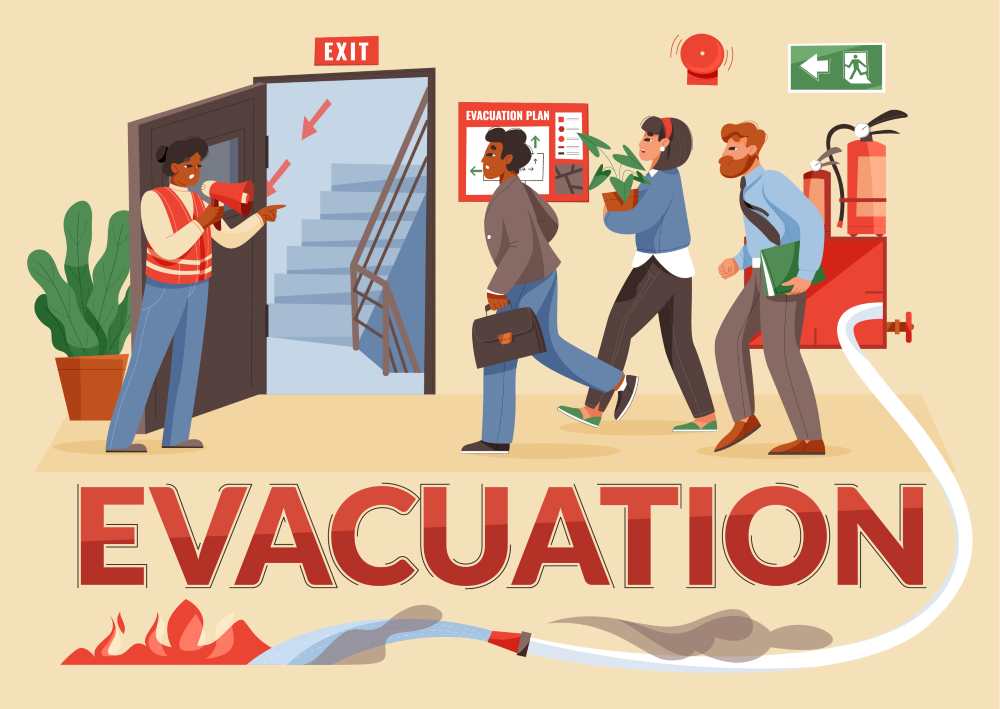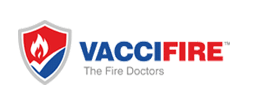Fire Evacuation Plan for Offices and Workplaces

Fire safety is one of the most important responsibilities for any business. Offices and workplaces are places where people spend most of their day, surrounded by electrical systems, machines, and flammable materials. Even with modern fire protection systems, no workplace is completely safe from fire accidents. That is why having a Fire Evacuation Plan is essential. A fire evacuation plan is not just a legal requirement in many regions but also a life-saving strategy. It ensures that in case of an emergency, everyone knows what to do, where to go, and how to stay safe. In this blog, we will explore why a fire evacuation plan is important, the key elements it should include, and how to create one effectively.
Why a Fire Evacuation Plan is Important
A fire can spread in seconds. Without proper preparation, confusion and panic can make the situation worse. A fire evacuation plan provides:
- Clear instructions on how employees should exit safely.
- Reduced panic since people know what to do.
- Protection of lives by ensuring quick evacuation.
- Better coordination with fire safety teams and local authorities.
For businesses, a proper evacuation plan also helps in reducing liability and meeting workplace safety regulations. Most importantly, it shows employees that their safety is a top priority.
Legal and Safety Requirements
Many countries have workplace safety laws that require companies to maintain a fire evacuation plan. For example:
- Buildings must have emergency exits that are clearly marked.
- Workplaces must conduct regular fire drills.
- Safety equipment such as fire alarms, extinguishers, and sprinklers must be functional.
- Evacuation maps should be posted in visible areas.
Ignoring these requirements not only puts lives at risk but may also result in penalties and damage to the company’s reputation.
Key Components of a Fire Evacuation Plan
Creating a fire evacuation plan involves more than just pointing out the exit doors. A well-prepared plan includes the following:
1. Risk Assessment
The first step is to identify fire risks in the workplace. Common risks include faulty electrical equipment, flammable materials, or improper storage. Once risks are identified, prevention measures can be applied.
2. Escape Routes
Every office should have clearly marked escape routes. These routes should:
- Be free of obstructions.
- Be wide enough to handle multiple people.
- Have proper lighting and exit signs.
3. Assembly Points
After evacuation, employees should gather at a designated safe area away from the building. This helps in counting people and making sure no one is left inside.
4. Alarm Systems
A fire alarm system is vital. It alerts everyone in the building to evacuate immediately. Alarms should be loud, well-maintained, and easily accessible.
5. Responsibilities of Employees
Certain employees should be given specific roles such as:
- Fire wardens who guide others during evacuation.
- First-aid providers.
- People responsible for calling emergency services.
6. Evacuation Maps
Evacuation maps should be displayed in common areas like hallways, lobbies, and meeting rooms. These maps show exits, fire extinguishers, and assembly points.
7. Communication Plan
Employees should know how to communicate during a fire. Emergency contact numbers, intercom systems, or fire alarms with voice instructions can help in avoiding chaos.
Steps to Create a Fire Evacuation Plan
Designing an effective fire evacuation plan requires planning and regular practice. Here are the steps to follow:
Step 1: Identify Fire Hazards
Walk through the workplace and note all possible fire hazards such as overloaded sockets, chemicals, or blocked exits.
Step 2: Design Escape Routes
Plan escape routes that are simple, short, and easy to follow. If the building has multiple floors, ensure that stairways are included instead of elevators.
Step 3: Assign Responsibilities
Appoint fire wardens and train them on how to assist during evacuation. Divide responsibilities so that everyone knows their role.
Step 4: Install Safety Equipment
Ensure that fire alarms, sprinklers, and extinguishers are installed and regularly tested. Place extinguishers near fire-prone areas.
Step 5: Mark Assembly Points
Choose a safe spot outside the building as an assembly point. Inform all employees about it during training sessions.
Step 6: Prepare Evacuation Maps
Create clear maps showing escape routes and fire safety equipment. Display them at important locations across the workplace.
Step 7: Train Employees
Conduct training sessions to teach employees how to use fire extinguishers, how to evacuate quickly, and how to help others.
Step 8: Conduct Fire Drills
Regular fire drills are the best way to test the effectiveness of your plan. They help employees practice and reduce panic in real situations.
Common Mistakes to Avoid
While preparing a fire evacuation plan, many workplaces make mistakes that reduce its effectiveness. Some of these mistakes include:
- Blocked exits due to storage or furniture.
- Not training employees regularly.
- Overlooking visitors or new staff who may not know the plan.
- Failing to update the plan after office renovations.
- Relying only on alarms without proper communication.
Avoiding these mistakes can save precious time and ensure everyone’s safety.
Role of Employees in Fire Safety
A fire evacuation plan is effective only when employees actively follow it. Every employee should:
- Know at least two escape routes from their work area.
- Keep their workspace free of fire hazards.
- Listen to instructions during evacuation.
- Avoid using elevators during fire emergencies.
- Help colleagues, especially those with disabilities, in evacuating safely.
Benefits of a Fire Evacuation Plan for Businesses
Apart from saving lives, a fire evacuation plan offers several benefits to businesses:
- Compliance with safety laws – avoids fines and legal trouble.
- Boosts employee confidence – workers feel safer knowing there is a plan.
- Protects business continuity – quicker response means less damage.
- Improves reputation – clients and partners see the company as responsible.
How Often Should Fire Drills Be Conducted?
Fire drills should be conducted at least twice a year, but more frequent drills may be required for high-risk workplaces. Regular practice ensures:
- Employees remember the evacuation process.
- Any weaknesses in the plan are identified.
- New employees are trained quickly.
Special Considerations for Workplaces
Every workplace is different, so evacuation plans should be customized. For example:
- High-rise offices need clear stairway access and safe refuge areas.
- Factories or warehouses may require extra precautions for chemicals.
- Workplaces with differently-abled employees should have assistance systems in place.
Conclusion
A fire can happen at any time, and the best way to stay safe is to be prepared. A Fire Evacuation Plan is a simple but powerful tool that ensures quick, safe, and organized evacuation during emergencies. By identifying risks, creating clear escape routes, training employees, and conducting regular drills, businesses can protect their people and assets.
Remember, safety is not just about equipment—it’s about planning, awareness, and responsibility. A well-implemented fire evacuation plan can make the difference between chaos and safety in critical moments.
